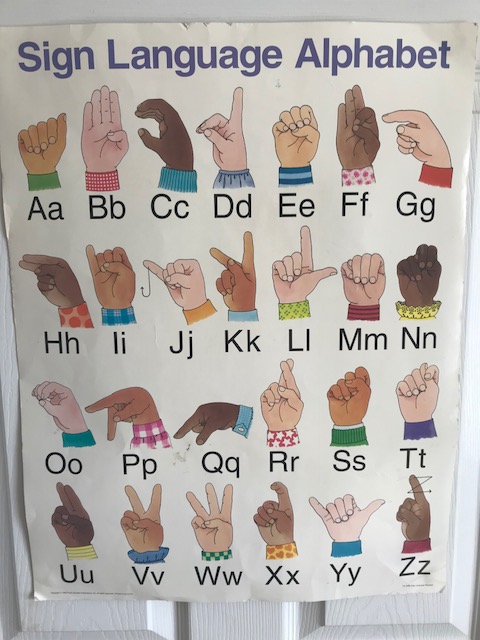Singer-songwriter, Andrew Peterson, has now, quite publicly, had his white eyes opened as I had my white eyes opened back in August 2017. Very humbling position that he is in. And, yet, I’m very hopeful his “screw up” will be greatly used for good to open many more white eyes to see what life is like from an African American perspective and that we as Americans will grow in our love and trust for each other across races.
Monday night my husband asked me if I wanted to watch Andrew’s new music video that was very popular that day on social media. Since I pretty much live under a rock when it comes to social media, I was clueless about the video. My husband doesn’t normally introduce me to new music videos, so I was curious to hear it. I watched. Is He Worthy? is an absolutely beautiful song. I loved it. And yet, as I watched I quickly noticed the whiteness of the video. White singers. Followed by white instrumentalists. Followed by white congregation. Strange. Only white people?! Ok. Maybe I’m just noticing because of my eye-opening experience back in 2017.
When the song finished, my husband asked if I had noticed anything. I immediately responded, “Everyone was white.” He then shared Andrew’s explanation and apology post.
Wow.
Yep, sounds like Andrew was just like me before my talk with my African American friend in 2017.
One thing that is interesting to me about the whole song situation is the reactions of people (you can read through comments after his apology post to see what I am referring to). Some white people didn’t notice at all that the participants were solely white. Some white people didn’t notice and are bothered that they didn’t notice. Others think the song is beautiful and we shouldn’t even be noticing what races are represented. Others think we should only see Christ…no color.
Unfortunately, we live in an imperfect country where white skin verses black skin was a very big deal for hundreds of years. Just because we are past the days of slavery and segregation does not mean we are past the days of unintentionally still saying “whites only.”
Andrew’s video, while beautiful in music, sent an unintentional message: “whites only.” Think about how painful that message could be for an African American person who is just a few generations away from slavery and a few more generations away from having his ancestors kidnapped from Africa and brought to America. The African American person listening to Andrew’s song could also have lived through the days of segregation when he was denied access to restaurants, libraries, restrooms, front row seats in buses, public pools, and certain schools…simply because he was…NOT white.
Even when integration happened everyone didn’t suddenly become friends. Brown-skinned people were treated with disrespect at times by whites. According to my African American friend, brown-skinned people are still treated differently to this day.
We’ve messed up badly here in our country. Really bad. Slavery. Then segregation.
So, when Andrew Peterson puts out an amazingly beautiful song for all of America to be blessed by but only white people are in the video, that can send out an unintentional message to African Americans that blacks aren’t important. Perhaps other races would feel excluded as well watching the video, but my focus in this article is especially blacks considering our history. Maybe some brown-skinned people don’t notice or care if only whites are in the video. Everyone is different. To me the song and many people’s reaction to it reveals how little whites understand what life is like for those who had ancestors who were kidnapped from their homeland, sold into slavery, were not allowed to learn to read, had families torn apart, and were overall in every conceivable way treated as less than human. Just because our generation doesn’t have slavery and segregation doesn’t mean we don’t have work to do to help mend past grievances.
What can white people do now in this generation to improve the overall trust between African Americans and whites? Whites need to grow in their understanding of what African Americans go through today simply because they are brown-skinned. We need to calm down and listen to each other. Then, we need to purposely, intentionally include brown-skinned people. For generations, whites naturally excluded blacks. Now, we have to retrain ourselves to include those who are brown-skinned. It isn’t just going to organically happen. It will take great thought and intention in this generation. But, in generations to come, I believe it will be much more natural. Today we have all races eating in the same restaurant and think nothing of it. However, right after segregation ended, I assume it would have been a little bit awkward to have whites and African Americans sitting in the same restaurant. That generation made an effort that led to a new (and better!) normal for us today. Now, our generation must make an effort. Future generations will reap the benefits of more peaceful racial relationships if we do so.
Once your eyes have been opened as mine have been and Andrew’s have now been, it is hard to not think about race and try to make racial tensions better.
This poster shows intentional racial inclusion.

Not all that long ago, only white hands would have been on that poster. I love that whoever made this poster thought enough to include multiple skin tones.
And, I loved when my African American friend texted me a brown-skinned thumbs-up. I was so thankful that Apple had been intentionally racially inclusive.

It is seemingly small things like this poster and emoji choices which send loud messages that all races matter. Intentional racial inclusion will help all races feel truly comfortable and at home in this “land of the free and the home of the brave.”